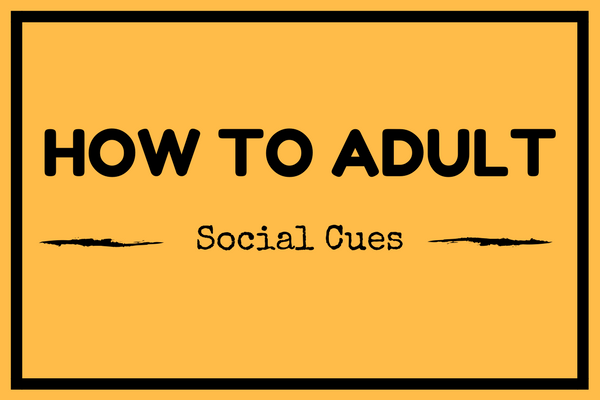
Photo by Sara Gerges
Reading other people and their body language can help aid young adults in figuring how to act in certain situations.
How to Adult: Reading Social Cues
Learning how to read people can be more beneficial than you’d think. Want to know if you’re nailing that job interview or if that cute boy likes you back? Reading body language and social cues allow people to read a others without them even knowing it. You may even spot a liar or two in the process.
Thousands of books have been published about this topic, so if you’re interested, I suggest reading one. For now, I’ll cover the basics.
Reading Body Language
Posture
The way one sits tells a majority of how a person is feeling or how they view themselves. Although slouching can be an indicator of simply poor posture, it can also denote insecurity or a lack of feeling confident. People subconsciously slouch to make themselves smaller in situations where they feel uncomfortable. On the other hand, someone walking into a room with their shoulders back with a puffed chest may be perceived as a more dominant character.
Feet
Did you know your feet can indicate what you’re paying attention to? If you’re on a date and the other person’s feet are pointed to the door, there’s a chance they want to hightail it out of there.
Legs
Similar to feet, legs can convey a person’s feelings without even realizing it. For example, in some cases where women feel uneasy or in danger, they tend to cross their legs, thus shielding the negativity from their body. Legs can also indicate a point of interest, so if you’re having a discussion while sitting down, look at the person’s feet and legs. If their lower half is shifted in the direction of the person speaking, then, congratulations. They’re probably paying attention.
Upper half
Crossed arms. Extended arms. Open arms. Hidden arms. They all tell a story. Oftentimes, people with their arms crossing over their chest indicate a feeling of distrust or internal discomfort, but this can also just be a sign of being relaxed. Open and extended arms have the more known concept of feeling accepted, or it could be someone’s attempt to feeling “bigger,” thus gaining more area in the surrounding space. Anything hidden — arms, legs, feet, hands — can be taken as a sign of insecurity or uneasiness. What people don’t want others to see, they hide.
Eyes
As “windows to the soul,” eyes can tell a lot about a person. Glances in certain directions can mean a variety of things from accessing memories to visualizing images and sounds. Fun fact: if pupils dilate or widen, it signifies the person is interested in what’s in front of them, or the room may be darker.
Mouth
What comes out of one’s mouth doesn’t always stay true to what’s in their heart. Whether it be the awkward “yikes” grin to the forced smile, the mouth can help indicate how someone truly feels. Most people know the universal frown and grin but don’t know the swift movement to the side of the face can denote disgust and disappointment or that lip biting can mean more than sexual arousal.
As an instinctual reaction, oftentimes, a big gulp or swallow in serious situations implies the person is feeling an immense amount of emotion. So next time you’re about to receive some big news, watch the person to see if they swallow. People forget that they’re transparent, so watch out, especially if you’re telling a lie. You never know, your body language may give you away.
Spotting a liar
Lying can be hard to detect, but paying attention to a few key details may lead you to spotting a liar. Have you ever seen someone use their hands while they speak? That’s called an emoter. If someone suddenly stops using their hands to talk, then it might be an indicator they may be lying. A classic pull for the ear, scratch on the nose, flared nostrils, hand over mouth, overly detailed statement, slightly heavier breathing than before, feet pointed away, lessened blinking or coverage of private areas are all symptoms of a liar. Now, individually, these actions cannot be categorized as a “liar’s tell,” but altogether, you may be in the presence of one.
Striving for confidence
Raised chest, head tilted upward, hands on hips and an authoritative tone of voice call for a recipe for confidence. Add in a firm handshake and a killer outfit, and you’ll be in charge in no time. People tend respond in a submissive way to this “look” because our bodies are subconsciously afraid of anyone bigger or stronger than us. If you fake the confidence, it’ll most likely rub off eventually, so why not give it a shot?
Remember, individually, these actions don’t mean anything — they have to be clumped together, but if you like analyzing other people’s emotions and reactions, I suggest watching Lie to Me. The entire series follows Dr. Cal Lightman and his team on various missions to decode people and their situations. The series is available on Netflix, and if the topic seems interesting enough, maybe watch a few TedTalks or Youtube videos online.